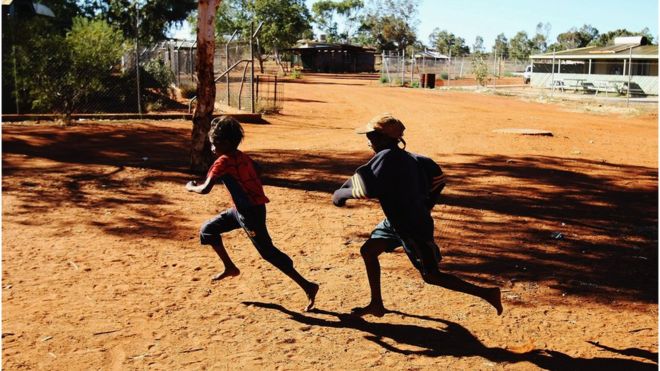
Australia’s prime minister has admitted government efforts to help improve the lives of indigenous Australians are not on track in key areas. Malcolm Turnbull tabled his first response to the annual Closing the Gap report in Parliament on Wednesday.
The report tracks progress on targets to reduce inequality between indigenous and non-indigenous Australians.
Mr Turnbull said a concerted effort was needed as the Closing the Gap initiative’s success rate was mixed.
“It is undeniable that progress against targets has been variable,” he wrote in the report’s introduction.
The report said a target to halve the gap in mortality rates for indigenous children under five within a decade (by 2018) was on track.
Smoking rates had reduced and the number of indigenous students finishing high school had almost doubled since the late 1990s, the report said.
But targets to halve the gaps in employment and life expectancy between indigenous and non-indigenous Australians were not on track.
‘Engagement problem’
Indigenous leaders have called for stronger engagement with communities in order to deliver the most appropriate policy.
Aboriginal and Torres Strait Islander Social Justice Commissioner Mick Gooda co-chairs the Aboriginal-led Close the Gap public awareness campaign that is separate to the government’s Closing the Gap initiative, but shares its objectives of reducing inequality.
Mr Gooda told The Social Magazine the government needed to focus on speaking to communities to ensure its policies would have an impact.
“Building relationships with communities takes time, [but] it seems the government would prefer to spend $1m developing a program that doesn’t work than $1m building a relationship,” he said.
Health services had always been a problem for indigenous communities, Mr Gooda said.
Language and cultural barriers, along with remoteness, made it challenging for some Aboriginal and Torres Strait Islander peoples to seek care until it was too late.
“If Aboriginal and Torres Strait Islander people aren’t going to hospital early to fix up things like chronic disease we may as well not have any services at all,” he said.
Yawuru leader Patrick Dodson said indigenous communities did not have a buy-in to policies, and without proper participation Closing the Gap was “doomed to fail” or would have only a small impact.
“We’re basically just changing the tablecloth on a table without really realising that the white ants are eating the legs out of the table, and we have to restructure the whole basis of our relationship,” he told the Australian Broadcasting Corp.
Closing the Gap: Key targets and progress
Targets in the Closing the Gap initiative focus on differences between indigenous and non-indigenous Australians in key areas.
- Halve the child mortality gap: The indigenous child mortality rate has declined by 33% since 1998 to 6.4 per 1000 live births. The government says this target is on track.
- Close the gap in school attendance: Little change in indigenous attendance rates from 2014 (83.5%) to 2015 (83.7%).
- Halve the gap in reading, writing and numeracy: Results in 2015 showed improvement and targets are within reach, but the report urges caution in case this is a statistical blip.
- Halve the gap in employment outcomes: Target is not on track. The indigenous employment rate was at 47.5% in 2012-13, compared to 72.1% for all Australians in 2013. New data will be available in 2016.
- Close the gap in life expectancy: Not on track. Life expectancy for indigenous men (69.1) and women (73.7) is far lower than for non-indigenous men (79.7) and women (83.1) and the gap is closing too slowly to meet a 2031 deadline.
Election priority call
The Closing the Gap report calls for both political parties to make indigenous health a top priority going into the election, rumoured to be held later in the year.
The report also recommends including new targets to address the high indigenous rate of incarceration, a focus on disability support, and a national inquiry into racism and institutional racism in the health care system.
Prime Minister Turnbull has called for a doubling of efforts to build trust and develop respectful relationships in order to provide more effective “local solutions”.
He also promoted his central theme of an “ideas boom”, urging indigenous businesses and entrepreneurs to take advantage of government programs.
“Our greatest assets are walking around on top of the ground not underneath it. Valuable though all those minerals are. I don’t short-change them but you and millions of other Australians like you are our best assets,” he said on Tuesday.
